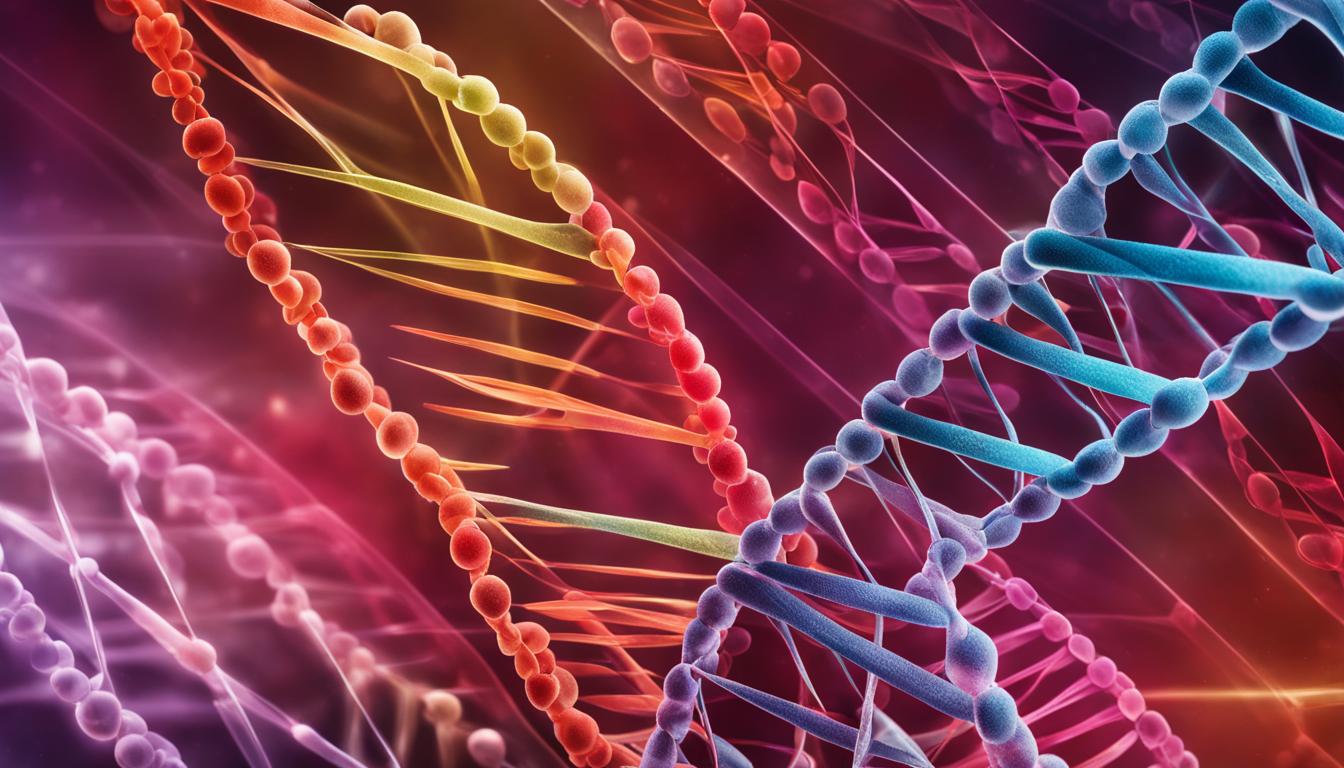The commercialization of DNA tagging is a growing trend that demonstrates the increasing practicality of this novel approach. DNA tagging technology offers distinctive benefits compared to conventional labeling techniques, such as UPC barcoding and RFID.
DNA is a stable and high-density storage medium that can potentially store much data. Various applications of DNA tagging have been explored, including art, forensics, wildlife monitoring, and the military.
Ongoing research is focused on improving the stability and decoding of DNA tags, with the potential for wide-ranging applications in identifying the origins of objects and tracking their movement.
Contents
- 1 DNA Tagging Technology
- 2 Existing DNA-Tagging Systems
- 3 Challenges and Benefits of DNA Tracking in Supply Chains
- 4 Conclusion
- 5 FAQ
- 5.1 What is the significance of DNA technology?
- 5.2 How does DNA tagging technology work?
- 5.3 What are the advantages of DNA-based tagging systems over conventional labeling techniques?
- 5.4 What are some examples of existing DNA-tagging systems?
- 5.5 What are the challenges of DNA tracking in supply chains?
- 5.6 How can DNA tracking technology improve supply chain transparency?
- 5.7 What are the benefits of DNA technology in supply chain transparency?
- 6 Source Links
Key Takeaways:
- DNA tagging technology offers unique benefits compared to traditional labeling techniques
- DNA is a stable and high-density storage medium with vast potential
- Applications of DNA tagging include art, forensics, wildlife monitoring, and military
- Research is ongoing to improve the stability and decoding of DNA tags
- Wide-ranging applications for DNA technology in identifying origins and tracking movement
Unlock the potential of DNA technology and explore its numerous benefits in various industries. DNA tagging is revolutionizing how we protect, track, and verify information from art authentication to supply chain transparency.
DNA Tagging Technology
DNA tagging technology is revolutionizing traditional labeling techniques. Unlike barcodes and RFID, DNA-based tagging systems offer numerous advantages, making them an attractive option for various applications.
One of the key benefits of DNA tagging is its ability to store a large amount of data. DNA is a stable molecule that can serve as a potential storage medium, unlocking new information storage and retrieval possibilities.
The design of DNA tags plays a crucial role in harnessing their full potential. Determining the type and size of information contained in the tags and the method of encoding and decoding the data is essential.
However, the process of DNA tagging also brings its own set of challenges. The instability of nucleic acids poses a significant hurdle in achieving reliable tagging, and decoding the stored information requires specialized techniques.
Various methods are used for reading and decoding DNA tags, such as polymerase chain reaction (PCR) and DNA sequencing.
These techniques enable researchers to extract valuable information from DNA tags, empowering them to track, identify, and authenticate tagged items.
Ongoing research in DNA tagging focuses on enhancing DNA tags’ stability and decoding capabilities.
The use of CRISPR-based techniques, which leverage the power of gene editing, shows great promise in overcoming some of the existing challenges.
Also Read: Challenges of Adopting Technology Explored
In this section, we will delve deeper into the intricacies of DNA tagging technology, exploring its potential applications and the ongoing efforts to enhance its stability and decoding capabilities.
But first, let’s take a closer look at DNA tagging technology’s advantages over traditional labeling methods.
Existing DNA-Tagging Systems
Several companies and research institutions have developed DNA-tagging systems for various applications.
Applied DNA Sciences offers a synthetic DNA tagging technology that can be used to track microcircuits, trace cannabis supply chains, and detect counterfeit products.
Other companies, like SigNature DNA and Haelixa, provide DNA-tagging solutions for product authentication and tracking.
Researchers have also explored using DNA ink, which combines synthetic DNA with printing inks, and the integration of DNA tags into pharmaceutical-grade printing ink and magnetic particles.
These DNA-tagging systems are aimed at improving product authenticity and traceability.
In addition, a groundbreaking technique known as the botanical DNA-tagging technique has been developed, allowing for the tagging of plants for various purposes, including identifying specific species and protecting endangered plants from illegal harvesting.
By embedding unique DNA sequences into plants, researchers and authorities can easily track and trace them in their natural habitats, enabling better conservation efforts.
“The integration of DNA technology in various industries has revolutionized the way we authenticate and trace products. DNA tagging provides an added layer of security and transparency, ensuring that consumers receive genuine and ethically-sourced products.”
To illustrate the potential of DNA-tagging systems, here is a table showcasing the features and applications of some prominent players in the field:
| Company | Technology | Applications |
|---|---|---|
| Applied DNA Sciences | Synthetic DNA tagging | Microcircuit tracking, cannabis supply chain tracing, counterfeit detection |
| SigNature DNA | DNA tagging solutions | Product authentication, tracing |
| Haelixa | DNA-tagging solutions | Product authentication, tracing |

These DNA-tagging systems provide unique identifiers, known as DNA taggants, that can be easily detected and analyzed.
These taggants serve as an indelible marker, allowing for product identification, tracing, and verification throughout their lifecycle.
DNA tagging technology continues to evolve, opening up new possibilities for supply chain transparency, anti-counterfeiting measures, and product authentication.
Challenges and Benefits of DNA Tracking in Supply Chains
The complexity of global supply chains poses significant challenges for companies striving to ensure transparency throughout their operations.
DNA tracking has emerged as an alternative method to trace raw materials from their sources to the final destination.
This technology provides a unique approach to supply chain transparency, allowing companies to authenticate and trace their products effectively.
Applied DNA Sciences, a pioneer in the field, utilizes synthetic DNA tags to track the origin of products.
By incorporating DNA tracking into their supply chains, companies gain the ability to verify the authenticity of their goods and comply with regulations related to forced labor and ethical sourcing.
Furthermore, DNA tracking enables companies to identify any instances of fraud or counterfeit products, reducing potential risks to their brand reputation.
Another approach to achieving supply chain transparency is using digital technologies like blockchain.
Also Read: Understanding What is Technology Refresh
By implementing blockchain-based systems, companies can create a transparent log of a product’s journey through the supply chain.
This enhances traceability and enables stakeholders to access real-time information, ensuring greater visibility and accountability.
Several benefits are associated with adopting DNA tracking and digital technologies in complex supply chains.
Firstly, integrating these technologies allows companies to mitigate the risks associated with counterfeit products, ensuring the delivery of genuine goods to customers.
Secondly, supply chain transparency aids in complying with ethical sourcing practices, promoting fair labor conditions and sustainability.
Lastly, alternative methods like DNA tracking and blockchain can streamline supply chain processes, reducing costs and improving efficiency.
However, the adoption of DNA tracking and digital technologies in supply chains is not without limitations.
One of the primary concerns is the cost associated with implementing these systems, which may require significant investment in infrastructure and training.
Additionally, there are ongoing discussions regarding the accuracy and reliability of DNA tracking methods, highlighting the need for further research and development to address these concerns.
Despite these challenges, the potential benefits of DNA tracking and alternative methods for achieving supply chain transparency are substantial.
As companies navigate the complexities of global supply chains, exploring and embracing innovative solutions that provide greater visibility, authenticity, and ethical practices is essential.
Conclusion
DNA technology has revolutionized supply chain transparency, offering a powerful solution for verifying product authenticity and ensuring ethical sourcing.
By utilizing DNA tagging and tracking methods and digital technologies like blockchain, companies can trace raw materials from their origins to store shelves with unprecedented accuracy and efficiency.
The implementation of DNA technology in supply chains goes beyond mere fraud prevention. It also plays a crucial role in promoting environmental conservation and addressing concerns regarding forced labor.
By enabling companies to track the entire journey of their products, DNA technology empowers them to make informed decisions that align with ethical sourcing practices.
However, as DNA technology advances, companies, policymakers, and society need to collaborate and uphold the responsible and ethical use of these technologies. This entails establishing clear guidelines, protecting privacy, and fostering transparency in implementing supply chain traceability solutions.
In conclusion, DNA technology has opened up a new era of supply chain transparency, providing a path to combat fraud, promote ethical sourcing, and protect workers’ rights. By embracing these advancements, companies can safeguard their brand’s reputation and contribute to a more sustainable and responsible future for global supply chains.
FAQ
What is the significance of DNA technology?
DNA technology has many applications, including genetic engineering, DNA sequencing, DNA testing, and DNA profiling. It has revolutionized medicine, forensic science, agriculture, and evolutionary biology.
How does DNA tagging technology work?
DNA tagging technology uses synthetic DNA tags to mark and trace objects or materials. These tags can store significant data and provide a unique identifier for tracking purposes.
What are the advantages of DNA-based tagging systems over conventional labeling techniques?
DNA is a stable and high-density storage medium that allows storing large amounts of data. Unlike traditional barcodes and RFID, DNA tags can be more durable, difficult to replicate, and less likely to be tampered with.
What are some examples of existing DNA-tagging systems?
Companies like Applied DNA Sciences, SigNature DNA, and Haelixa offer DNA-tagging solutions for product authentication and tracing. These systems have been used in various industries, including microcircuits, cannabis supply chains, and counterfeit product detection.
What are the challenges of DNA tracking in supply chains?
Challenges include the instability of DNA, the decoding of DNA tags, and the cost considerations of implementing DNA-tagging systems. However, ongoing research is focused on improving the stability and decoding of DNA tags, making them more viable for supply chain tracking.
How can DNA tracking technology improve supply chain transparency?
DNA tracking technology and digital technologies like blockchain can help companies trace raw materials from their source to the store. This ensures product authenticity, assists comply with ethical sourcing regulations, and reduces the risk of fraud and forced labor in supply chains.
What are the benefits of DNA technology in supply chain transparency?
DNA technology can contribute to environmental conservation, ethical sourcing, and combatting forced labor. By ensuring supply chain transparency, DNA technology helps build trust between companies and consumers, promotes responsible business practices, and reduces the negative impact on the environment and society.




